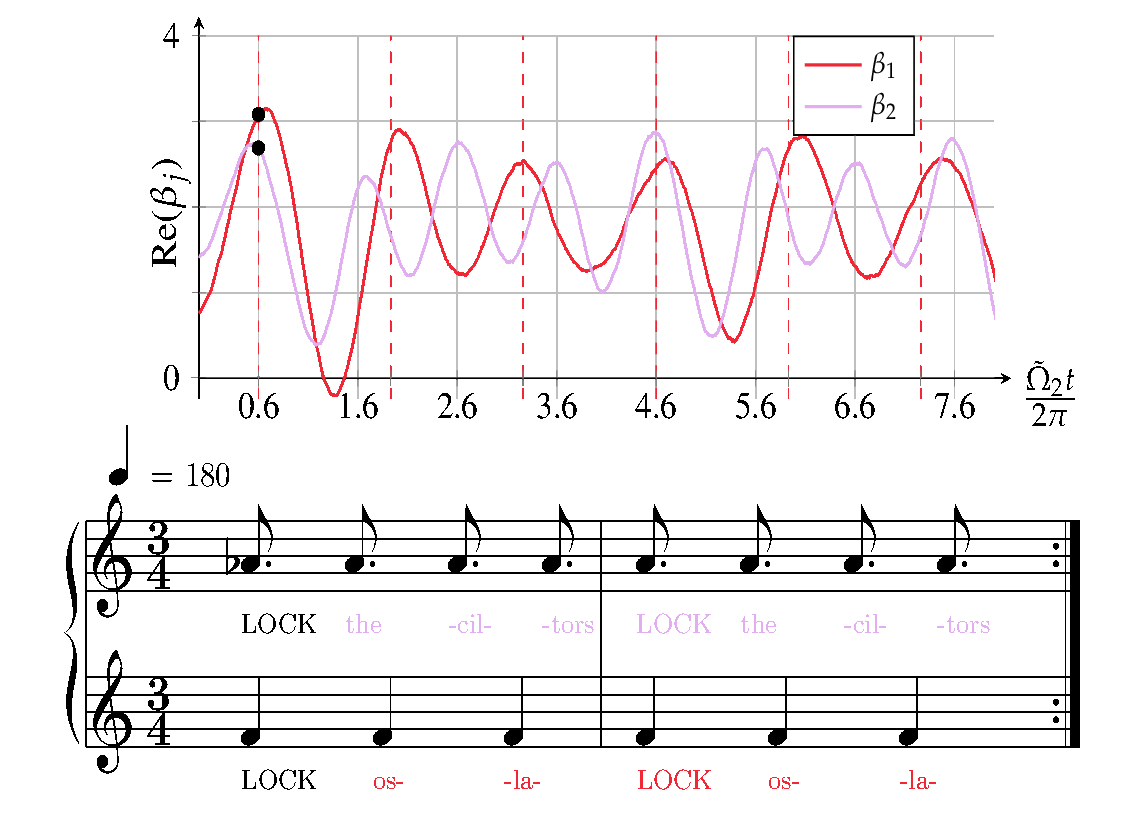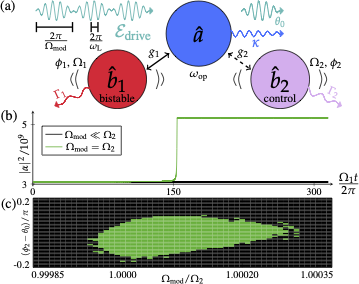Floquet Dynamics
Optomechanical systems under the influence of periodic modulation
During my PhD I studied the backaction of optomechanical systems under periodic intensity modulation, which lead to a periodic Hamiltonian. It enables the mechanical modes to trigger the instability of another mechanical mode. In the blue detuned regime, it is possible to attain mode-locked lasing of two modes even though there is mode competition which was shown experimentally in (Mercadé et al., 2021). The theoretical formalism shows, that the intensity modulation needs to occur at the difference frequency of the two mechanical oscillators. There is a wonderful intuition that explains the physics of this system in terms of a choir as shown in the figure below.

Imagine two groups singing a 4/3 polyrhythm such that the upper group sings notes at a frequency of 4 Hz whilst the other group in the lower line of the clave sings notes at a frequency of 3 Hz. A conductor would indicate the 1 of each measure at a frequency of 1 Hz which happens to be the difference frequency of the two groups.
Employing the same formalism it is also possible to have one mechanical mode trigger the instability—optomechanical bistability in this case—of the other mechanical mode which is published in (Pelka et al., 2022).
